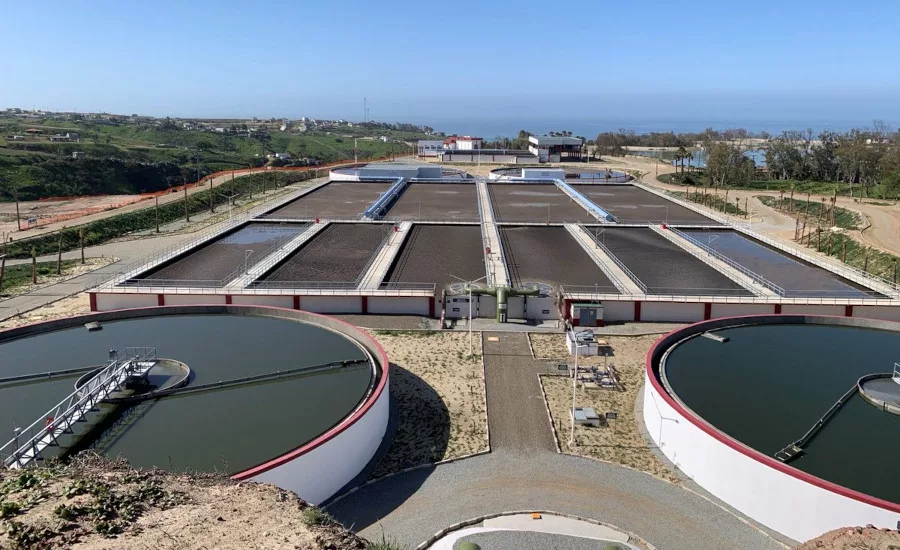US, Mexico Fast‑Track Tijuana River Wastewater Treatment Fix

United States and Mexican officials signed a memorandum of understanding on July 24 to fast-track multiple cross‑border wastewater projects to end south-of-the-border sewage flows into the Tijuana River by the end of 2027.
U.S. Environmental Protection Agency Administrator Lee Zeldin met with Secretary of the Environment and National Resources of Mexico Alicia Bárcena Ibarra at the Council of the Commission for Environmental Cooperation (CEC) signed the memorandum of understanding (MOU) in Mexico City.
The MOU includes more than a dozen infrastructure upgrades on both sides of the border, with Mexico committing to six projects by the end of 2025. Additionally, IBWC officials announced that the capacity of the South Bay International Wastewater Treatment Plant will now double to 50 million gallons per day by the end of 2027.
The agreement updates a formal bilateral work plan adopted by the International Boundary and Water Commission (IBWC), known as Minute 328 memorandum, signed in 2022.
When asked for comment on the accelerated upgrades outlined in the MOU, EPA Administrator Lee Zeldin told reporters during a press conference in Mexico City, “If any speed changes, that speed will have to be a speed to go faster.”
Zeldin called the pact “a massive environmental and national security win” in a release, noting that the MOU accounts for population growth, operation and maintenance costs and other long‑term variables in design and funding decisions.
Veolia North America — which operates the South Bay International Wastewater Treatment Plant on the U.S. side of the border that’s being expanded and upgraded by the design-build team of Stantec and PCL Construction — said in a statement that it welcomes the new operational agreement between the two governments.
“We are hopeful that the agreements and actions set out in the memorandum will holistically address the cross-border sewage issue that has plagued San Diego County communities for years with beach closures, persistent odors and damage to sensitive environmental habitat.Veolia operates the South Bay Wastewater Treatment Plant on behalf of the U.S. government, which for years has treated more of Mexico’s sewage than any of Tijuana’s treatment plants,” said Adam Lisberg. senior vice president of external communications for Veolia NA in a statement.
Under the latest accord, Mexico will allocate $93 million in funds to improve wastewater facilities on the southern side of the border. In addition, Mexico’s Comisión Estatal de Servicios Públicos de Tijuana and its federal water agency, CONAGUA, will reroute 10 million gallons per day of treated effluent from the Arturo Herrera and La Morita plants.
Other measures outlined in the procurement notices include restoring the Parallel Gravity Line and completing six priority projects by the end of 2025, with all other upgrades—including Pump Station 1 and cross-border collection pipelines—due by December 31, 2027.
Officials expect that follow‑on minute to include at least a dozen additional measures—potentially covering expanded conveyance capacity, lagoon upgrades, source‑control programs upriver in Tijuana and enhanced health‑monitoring protocols—to secure a permanent, sustainable solution.
Looking ahead, the MOU directs both governments to review all project schedules within 100 days and negotiate a new IBWC minute by the end of this calendar year.
Meanwhile, as ENR reported in June, the U.S. Section of the IBWC awarded the Stantec/PCL design-build team a $42.4-million design-build contract for the South Bay International Wastewater Treatment Plant expansion. That project aims to increase capacity from 25 million to 35 million gallons daily over five years and, eventually, to 50 million gpd.
RELATED
PCL, Stantec Outline $600M Expansion of San Diego Wastewater Treatment Plant
Permits and right-of-way easements are also proceeding in parallel. Both governments are finalizing cross-border easements and securing IBWC concurrence for pipeline alignments beneath the river channel. Meanwhile, the San Diego Regional Water Quality Control Board oversees discharge permits and wetlands mitigation under California law, as regulatory filings show.
Cross-border sewage flows have forced repeated closures of the several beaches including the community of Imperial Beach since 2021. San Diego Coastkeeper reports that overall beach closures have topped 1,000 days, with cross‑border flows peaking at 50 million gallons per day during storms.
The Scripps Institute of Oceanography at the University of California San Diego recently introduced a website that rates the level of pollution in local beaches. The Pathogen Forecast Model, hosted by the Southern California Coastal Ocean Observing System at Scripps, shows forecasted levels of sewage in the coastal ocean in the San Diego-Tijuana border region together with illness risk for ocean swimming.
The levels are based on the latest data from the institute which the San Diego County is now using as well. The data model was developed with funding from the state and additional funds to expand the tool were included in the 2026 Commerce Justice Science and Related Agencies Appropriations bill approved by the House Appropriations Subcommittee in mid-July.
“The Pathogen Forecast Model has considerable skill in predicting five days into the future the beach water quality measurements made by San Diego County from Imperial Beach to Coronado,” said Scripps oceanographer Falk Feddersen, the project lead, in a statement. “Of course, just like with weather forecasts, the model has error. It is still experimental.”
The post "US, Mexico Fast‑Track Tijuana River Wastewater Treatment Fix" appeared first on Consulting-Specifying Engineer

